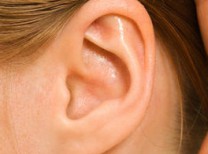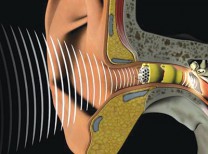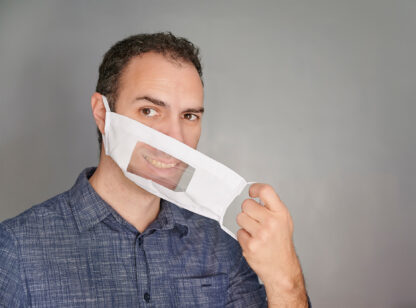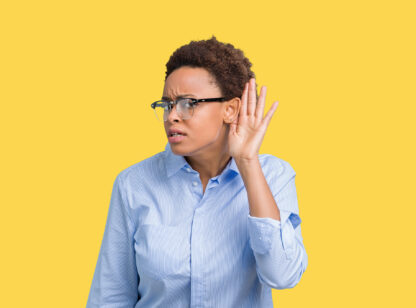Dizziness is a common occurrence. More than 40% of adults report dizziness, vertigo, or balance problems to their physician. Terms such as unsteady, lightheaded, and vertigo, are often used by patients to describe their dizziness. But what do these terms mean?
Vertigo is the perception of movement, and often is described as spinning. Patients may feel as if the room around them is moving. Disequilibrium means that one has a sensation of imbalance or unsteadiness. Dizziness is a non-specific term, used to describe a sensation of lightheadedness, unsteadiness, or faintness.
What are common causes of dizziness?
- Medications
- Dehydration
- Orthostatic hypotension (decreased blood flow to the brain when standing quickly)
- Degeneration of the normal balance mechanisms (with age)
- Ear disorders (including infections, Meniere’s disease, and positional vertigo)
- Tumors or other disorders of the brain
- Head trauma
- Visual problems
- Post-operative total joint replacement
How is dizziness treated?
It depends on the cause. If the cause is a medication, the type or dosage is changed. If the cause is high/low blood pressure, then that is stabilized. If the dizziness is due to an ear problem, the treatment depends on the type of ear condition. Infections are treated with antibiotics, Meniere’s disease (vertigo caused by excessive fluid inside the inner ear) may require diet modification, diuretics or possibly surgery. BPPV, or “benign paroxysmal positional vertigo”, is a common cause of vertigo and may be effectively treated in the office with a procedure known as the “Epley Maneuver”.
The concern of falls from dizziness
Dizziness and balance problems often lead to falls resulting in serious injury, fractured limbs and even death. Data on falls is alarming:
- Each year, one in every three adults over the age of 65 suffers a fall
- Falls are the leading cause of death in individuals age 65 and older
- Falls can result in serious injury: brain injury, broken limbs, hip fracture and death
- Hip fractures from a fall have serious consequences: 15-20% of patients die within[sup]1[/sup] one year of suffering a hip fracture
- In 2009, over 2.2 million fall injuries were treated in emergency departments
- In 2000, medical costs of falls totaled over $19 billion dollars
Who is at risk for falling?
Anyone who suffers from dizziness, vertigo, or a balance disorder is at risk for falling. One-third of seniors over the age of 65 have balance problems. Why? As we get older, age-related body changes including visual problems, degeneration of the inner ear, and joint replacement operations, contribute to imbalance.
What can you do?
Step One: Physician evaluation. Physicians treating patients over age 65 should ask their patients if they have dizziness or balance issues. Referral to an ENT (ear, nose and throat) physician is often recommended, as the ear is the primary organ that controls balance. An Otologist/Neurotologist is an ENT physician who specializes in disorders of hearing and balance.
Step Two: Diagnostic tests. Special balance testing is done at the ENT office. These tests evaluate the inner ear, the eyes and the brain. A hearing test is also done if an inner ear problem is suspected.
Step Three: Treatment programs. After a proper diagnosis is made, a customized treatment plan is developed. Most balance problems are not treated with medication, as medication can do more harm than good, in some cases.
Patients with balance disorders may benefit from balance therapy, known as “vestibular rehabilitation”. This is an exercise-based program designed to promote central nervous system compensation for inner ear deficits. The physician (otologist) develops a personalized treatment plan along with a physical therapist who has special training in balance rehabilitation. This plan includes eye, head, ear and body exercises that retrain the brain’s connections with these body parts. The brain recognizes and processes signals from the ear and coordinates them with information from the eyes and position sensors in the joints and feet to improve balance. Balance therapy can be extremely effective in improving dizziness, balance and preventing catastrophic falls.
Additionally, individuals should learn about home and environmental risk factors (such as poor lighting, slippery throw rugs.) This can help individuals take action to reduce fall risk in their daily lives.
With proper treatment, most individuals improve their balance, minimize risk factors and reduce their risk for falls. This leads to an improved quality of life for the individual as well as for their friends and loved ones.
Dr. Kato is the founder of The Ear Institute in Palm Desert. She has a keen interest in balance disorders and improving the quality of life of her patients. Dr. Kato can be reached at: 760-565-3900.
References: (1) Sloane PD. Dizziness in primary care. Results from the national ambulatory medical care survey. J. Family Practice 1989;29:33-38.(2). Hausdorff JM, Rios DA, Edelber HK. Gait variability and fall risk in community–living older adults: a 1–year prospective study. Archives of Physical Medicine and Rehabilitation 2001;82(8):1050–6. (3). Hornbrook MC, Stevens VJ, Wingfield DJ, Hollis JF, Greenlick MR, Ory MG. Preventing falls among community–dwelling older persons: results from a randomized trial. The Gerontologist 1994:34(1):16–23. (4). Centers for Disease Control and Prevention, National Center for Injury Prevention and Control. Web–based Injury Statistics Query and Reporting System (WISQARS) [online]. Accessed November 30, 2010











































Comments (0)